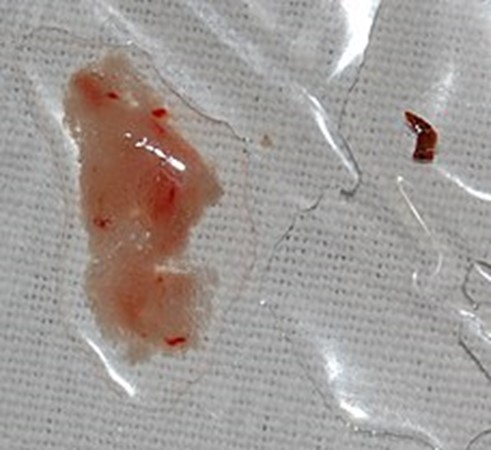A patient taking a combination of antineoplastic agents develops stomatitis. Nursing care should include actions to prevent which problem?
Inadequate nutritional intake.
Dental caries.
Diarrhea.
Gingival hyperplasia.
The Correct Answer is A
Choice A rationale:
Stomatitis, inflammation of the oral mucosa, can make eating painful, leading to inadequate nutritional intake. The discomfort caused by stomatitis can discourage the patient from eating, potentially resulting in malnutrition. Ensuring adequate nutritional intake is crucial to support the patient's immune system and healing during antineoplastic therapy.
Choice B rationale:
Dental caries are not directly related to stomatitis. Stomatitis is inflammation of the oral mucosa, whereas dental caries involve decay of tooth structure due to bacterial action on food debris and sugars.
Choice C rationale:
Diarrhea is unrelated to stomatitis. Diarrhea involves frequent, loose, or watery stools, often caused by gastrointestinal infections, certain medications, or dietary intolerances.
Choice D rationale:
Gingival hyperplasia is an overgrowth of gum tissue and is not a likely result of stomatitis. It can be associated with some medications like anticonvulsants.

Nursing Test Bank
Naxlex Comprehensive Predictor Exams
Related Questions
Correct Answer is B
Explanation
Choice A rationale:
Meconium ileus is a concern in newborns with cystic fibrosis due to thick meconium, which can cause intestinal obstruction. At 16 years old, this complication is not relevant to the client's current condition.
Choice B rationale:
Blood-streaked sputum is a likely finding in a 16-year-old with cystic fibrosis and decreased pulmonary function. Cystic fibrosis leads to mucus accumulation and lung infections, which can cause blood vessels to rupture, resulting in blood-streaked sputum.
Choice C rationale:
Clear breath sounds bilaterally indicate healthy lung function, which is not expected in a client with cystic fibrosis and decreased PFT results. Breath sounds are likely to be diminished due to mucus accumulation.
Choice D rationale:
Dyspnea, or difficulty breathing, is a common symptom in clients with cystic fibrosis and decreased pulmonary function. However, the question asks about the expected findings that the nurse should assess, not a symptom that the client might report.

Correct Answer is B
Explanation
Choice A rationale:
Pedal edema is not indicative of digoxin toxicity. Digoxin toxicity primarily affects the heart's electrical activity and rhythm, not fluid accumulation in the extremities.
Choice B rationale:
Cardiac arrhythmias are a hallmark sign of digoxin toxicity. Digoxin can lead to various types of arrhythmias, such as atrial tachycardia, atrial fibrillation, and ventricular ectopy. This occurs due to the drug's effects on altering the electrical conduction in the heart.
Choice C rationale:
Circumoral cyanosis is not a typical sign of digoxin toxicity. This symptom might be seen in conditions like methemoglobinemia or respiratory distress, but it's not directly related to digoxin toxicity.
Choice D rationale:
Infrequent voiding is not a specific sign of digoxin toxicity. It could be related to various factors, such as fluid intake, renal function, or underlying medical conditions, but it's not a hallmark of digoxin toxicity.
Whether you are a student looking to ace your exams or a practicing nurse seeking to enhance your expertise , our nursing education contents will empower you with the confidence and competence to make a difference in the lives of patients and become a respected leader in the healthcare field.
Visit Naxlex, invest in your future and unlock endless possibilities with our unparalleled nursing education contents today
Report Wrong Answer on the Current Question
Do you disagree with the answer? If yes, what is your expected answer? Explain.
Kindly be descriptive with the issue you are facing.
